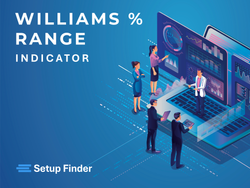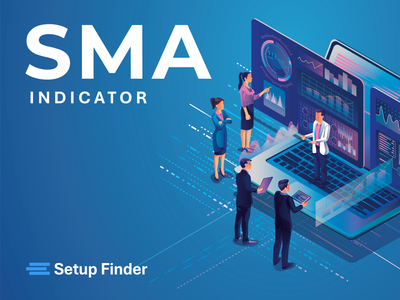What is On-Balance Volume (OBV)?
On-Balance Volume (OBV) is a technical indicator that measures buying and selling pressure by tracking the cumulative volume of an asset. Developed by Joseph Granville in the 1960s, OBV is based on the idea that volume precedes price movement, meaning that significant changes in volume can signal upcoming price trends. The OBV line is calculated by adding the volume on up days and subtracting the volume on down days, creating a cumulative total that helps traders identify the flow of money into or out of an asset.
How Does On-Balance Volume Work?
The OBV is calculated using a straightforward formula:
- Up Day: If the closing price is higher than the previous close, the day's volume is added to the OBV.
- Down Day: If the closing price is lower than the previous close, the day's volume is subtracted from the OBV.
- No Change: If the closing price is unchanged from the previous close, the OBV remains the same.
The formula can be expressed as:
- OBV (today) = OBV (yesterday) + Volume (today) if the price closes higher.
- OBV (today) = OBV (yesterday) - Volume (today) if the price closes lower.
- OBV (today) = OBV (yesterday) if the price is unchanged.
The resulting OBV line is plotted on a chart and can be analyzed to identify trends, divergences, and potential reversals in the market.
Why Use On-Balance Volume in Cryptocurrency Trading?
The cryptocurrency market is highly sensitive to changes in trading volume, making OBV a valuable tool for identifying potential price movements before they occur. By analyzing the OBV line, traders can gain insights into whether buying or selling pressure is increasing or decreasing, which can help them make more informed decisions about when to enter or exit trades.
On-Balance Volume Trading Strategies
1. Trend Confirmation
One of the primary uses of OBV is to confirm the direction of a trend.
Bullish Trend: When the OBV is rising and the price is also moving upward, it confirms that the uptrend is supported by strong buying pressure. Traders may consider entering or holding long positions.
Bearish Trend: When the OBV is falling and the price is also moving downward, it confirms that the downtrend is supported by strong selling pressure. Traders may consider entering or holding short positions.
Practical Example: Suppose you're trading Ethereum, and both the price and OBV are rising. A trader might interpret this as a confirmation of the bullish trend and look for opportunities to go long.
2. Identifying Divergences
Divergences between the OBV and the price of the asset can be powerful indicators of potential reversals.
Bullish Divergence: Occurs when the price makes a new low, but the OBV makes a higher low. This suggests that, despite the price decline, buying pressure is increasing, which could lead to a reversal to the upside.
Bearish Divergence: Occurs when the price makes a new high, but the OBV makes a lower high. This indicates that, despite the price increase, selling pressure is growing, which could lead to a reversal to the downside.
3. Breakout Strategy
OBV can also be used to anticipate breakouts.
Bullish Breakout: If the OBV rises sharply while the price remains flat or consolidates, it could indicate that a bullish breakout is imminent.
Bearish Breakout: If the OBV drops sharply while the price remains flat or consolidates, it could indicate that a bearish breakout is likely.
How to Read On-Balance Volume
To correctly interpret OBV, traders focus on the following key points:
- Rising OBV: Indicates that buying pressure is dominant, often signaling a continuation of an uptrend.
- Falling OBV: Indicates that selling pressure is dominant, often signaling a continuation of a downtrend.
- Divergences: Divergences between OBV and price can signal potential trend reversals, providing valuable entry and exit points.
Comparing OBV with Other Volume Indicators
While OBV focuses on the cumulative volume to predict price movements, other volume indicators like the Chaikin Money Flow (CMF) and the Accumulation/Distribution Line also provide insights into buying and selling pressure. OBV is unique in its simplicity, offering a clear view of whether volume is flowing into or out of an asset. This makes it particularly useful for identifying the underlying strength of a trend.
Frequently Asked Questions About On-Balance Volume
What is a good OBV value to trade? There is no specific OBV value that is considered "good" for trading. Instead, traders focus on the direction of the OBV line (rising or falling) and its relationship with price movements to make trading decisions.
Can OBV be used in all markets? Yes, OBV is versatile and can be used in various markets, including cryptocurrencies, forex, and stocks. Its effectiveness may vary depending on market conditions and the specific strategy being used.
Is OBV better than CMF or the Accumulation/Distribution Line? OBV, CMF, and the Accumulation/Distribution Line each offer different insights. OBV is particularly effective for confirming trends and identifying divergences, while CMF and the Accumulation/Distribution Line provide more nuanced views of volume and price relationships. The choice depends on the trader's strategy and market conditions.
On-Balance Volume Applications in Forex and Stock Trading
While this article focuses primarily on cryptocurrencies, OBV is also widely used in forex and stock trading. In forex, OBV helps traders assess the strength of trends in currency pairs by analyzing the flow of volume. In the stock market, OBV can be used to evaluate the strength of trends in individual stocks or indices, helping traders make informed decisions about entry and exit points.
Conclusion: On-Balance Volume as a Key Volume Indicator
On-Balance Volume is a powerful tool for any trader, whether operating in cryptocurrencies, forex, or stocks. Its ability to combine price and volume into a single, easy-to-interpret line makes it an essential indicator for trend-following and reversal strategies.







